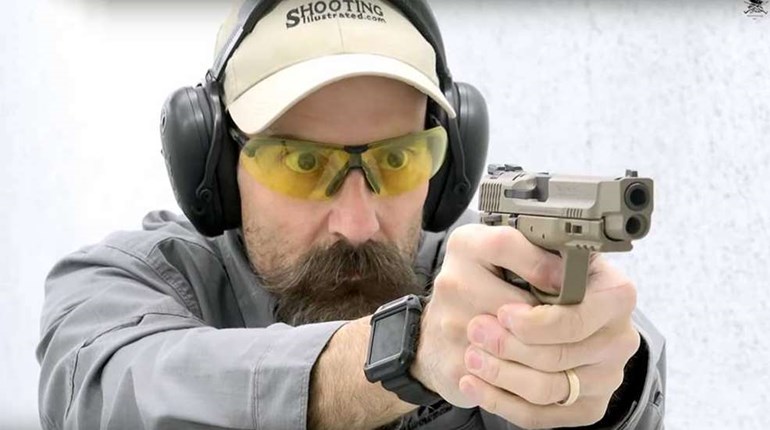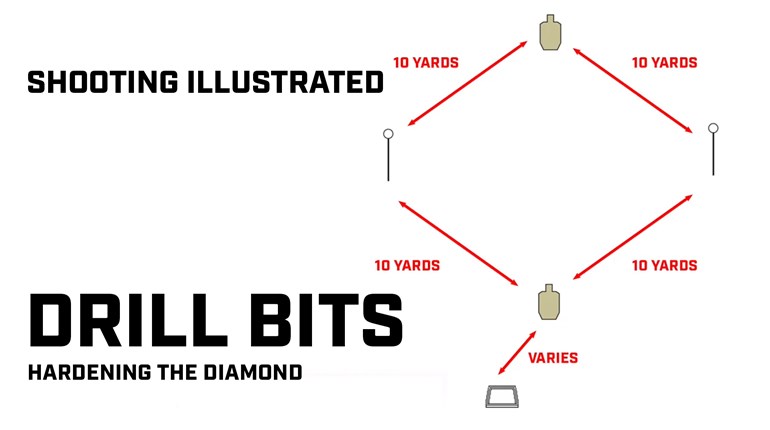
An increase in the intensity of a violent physical threat warrants an increase in use of force. How can you use your environment and a few tricks from the world of professional protection to mitigate a threat progression and subsequently reduce the need for use of force? The answer begins with defining a threat progression.
A threat progression is defined by a series of cascading events leading up to and including the engagement of a violent physical threat – an attack on your person. In its nascent stages a threat begins only as a potential such as a predator looking for prey or an opportunist seeking low-hanging fruit (to commit a crime).
Following this potential is the conversion of the potential threat to an active threat – the predator or opportunist has selected you as their target and has made the decision to initiate an attack. Following this selection and decision they must then verify that you are in fact the best target for their nefarious scheme. Lastly, they plan to close in on you, follow their plan to close in on you and eventually attack.
Threat progression steps defined:
- Potential threat – predator or opportunist looking or seeking.
- Active threat – select a viable target and decide to attack.
- Verify – ensure that you are their best target selection.
- Plan – form a realistic plan to close in on you.
- Close – change physical position and/ or distance to you.
- Attack – initiate a physical attack with or without weapons.
In any violent physical altercation, it is the bad guy (BG) who has the initiative. They determine such details as the location, time, victim and method of attack. As such you are placed behind the action/reaction power curve. Your objective, should you choose to accept it, is to take the initiative from them and in doing so place yourself ahead of the action reaction power curve. The three defensive options available to you in achieving this objective are proactive measures, active measures and reactive measures.
Proactive measures are the very best as they allow you to solve the tactical problem at the very onset during threat progression steps 1 – 4 and with the least amount of physical injury possible.
Examples of proactive measures might include applying your situational awareness – less time on your phone and more attention placed on your immediate environment. Nothing screams ‘soft target’ as loud as you appearing to be unaware of your surroundings to a predator.
Taking visual control of your environment affords you the ability to use your awareness as a deterrent to stop the threat in the earliest stages of a threat progression. Should you observe them observing you, then you have eliminated the all-important element of surprise which makes you a more difficult target and most likely will eliminate you from their target selection listing.
Failing proactively applying your awareness and at least being mentally connected (applying some attention) to your immediate environment you happen to take notice of someone closing in on you.
Upon observing step 4 – a predator or opportunist that may be moving or closing in on you, you still have time to change your physical position and or distance relative to your threat. Applying this active measure of adjusting your direction and mobility buys you more space. Creating space buys you time which buys you more opportunity to solve the tactical problem.
Failing proactive measures and active measures and now much further along the threat progression at step 6 (attack), you are relegated to only reactive measures. The only way you’re going to take back that initiative and move to the front of the action reaction power curve is to make them react to you utilizing reactive measures.
You have only three choices here and they are to take flight – move off the ‘X’, stand your ground and fight it out or surrender to your opponent(s). The best of these is to take flight as you have created space which buys you time and in turn more opportunity to solve the problem. If you elect to slug it out toe-to-toe, then you have decreased your time and options and raised your potential, and that of any persons with you, for physical injury.
In choosing to engage an active threat you now need to decide on an appropriate use of force option commensurate with the threat. The very best of these is to utilize your environment, get behind cover, move through an open door, change your physical position, move to a position of physical dominance (higher ground, better micro terrain, etc.,) which may provide you the tactical advantage.
According to the United States Department of Justice Office of Justice Programs National Institute of Justice most law enforcement agencies have policies that guide their use of force. These policies describe an escalating series of actions an officer may take to resolve a situation. This continuum generally has multiple levels, and officers are instructed to respond with a level of force appropriate to the situation at hand, acknowledging that the officer may instantly move from one part of the continuum to another. Civilians are held to standards which as such would be deemed “reasonable’ by a jury of their peers.
The recommended use of force continuum is verbalization – calmly ask and if no result then issue nonthreatening commands and if no result then make them by using some type of empty-hand controlled force such as martial arts or defensive tactics. If still no result, then utilize less-lethal strikes or chemicals (OC spray). Failing any of the above your only remaining force option is lethal use of force to include an edged or impact weapon, other weapon of opportunity or your firearm to stop the threat or control the situation.
The further you wait along the threat progression timeline the greater your risk of injury and the fewer your force options. The earlier you solve the problem the less potential you incur for physical injury.
According to the very best in the protective services industry, if a protective agent reaches for a firearm, then they have failed in two-thirds of the protective formula in keeping their protectee(s) from harm. In plain speak they waited until step 6 (attack) of a threat progression relying solely on reactive measures to solve the problem when it could have been handled more effectively much earlier on the timeline.
The balancing act is selecting the most appropriate force option given your current set of circumstances and threat level. The very best kept secret from the world of professional protection services is to solve the problem early on the timeline using proactive and active measures. Solving the problem early in the development of a threat progression provides the safety and tactical advantage of not needing to physically engage an active threat.





































